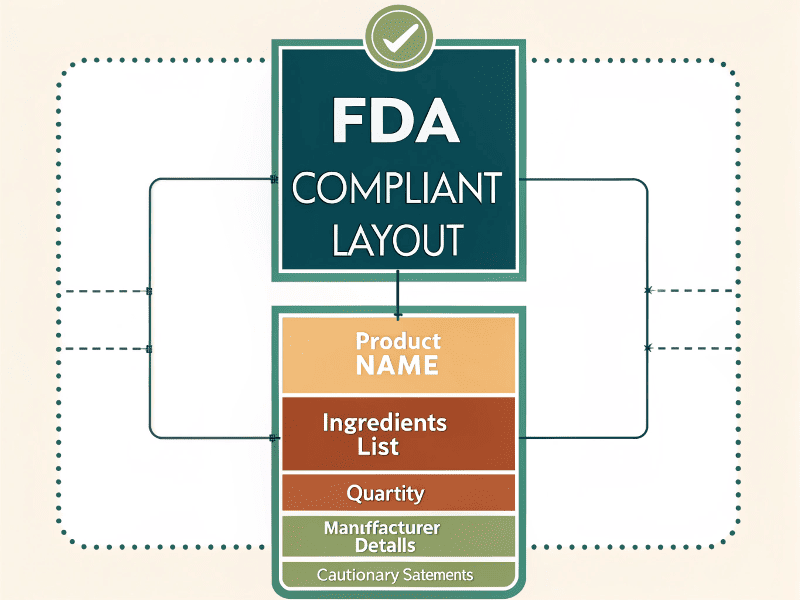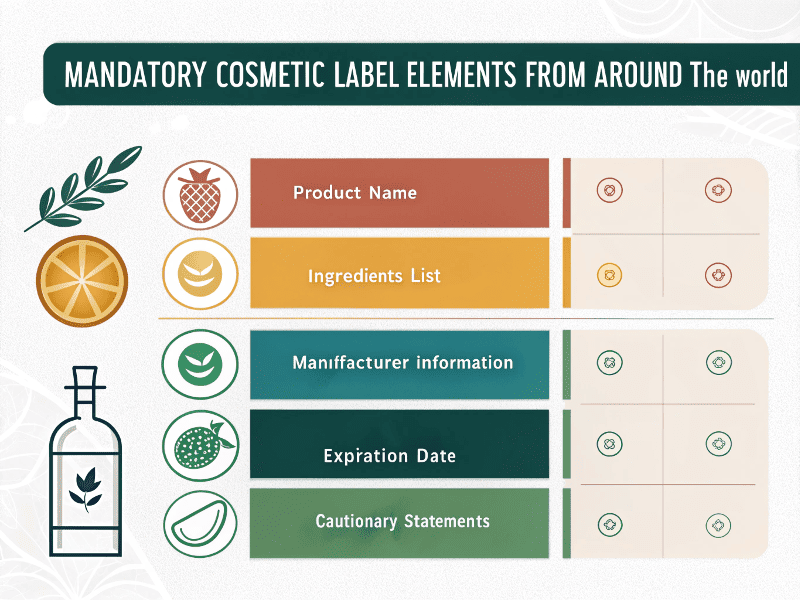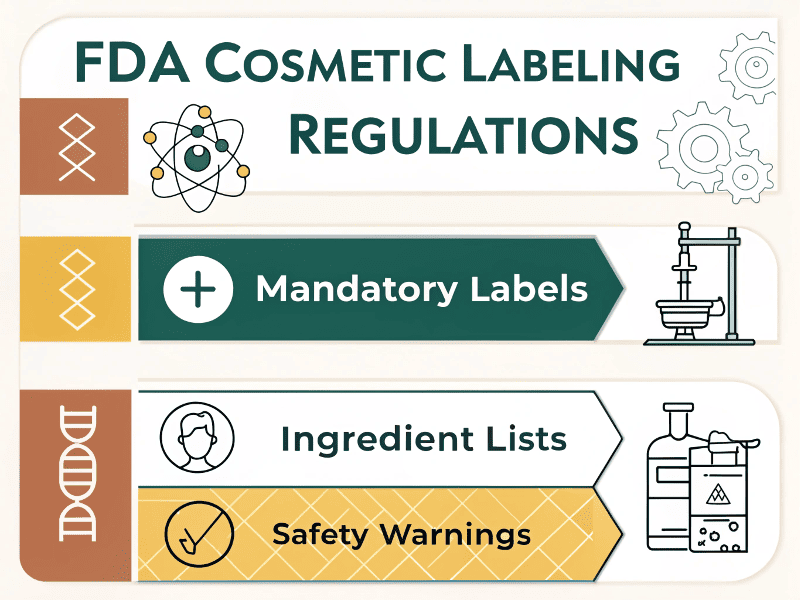
How to Label Your Cosmetic Products Correctly: A Step-by-Step Guide
August 14, 2025 • Mike Lee
Struggling with cosmetic labeling regulations? Proper labeling not only keeps you compliant but also builds trust with your customers while making your products stand out on shelves.
Correct cosmetic labeling requires: 1) Mandatory regulatory information 2) Clear ingredient listing 3) Proper net quantity declaration 4) Manufacturer details 5) Safety warnings. The key challenge is balancing strict compliance with attractive design that captures consumer attention.

I've helped over 50 brands navigate labeling requirements across multiple markets. Here's my proven approach to creating compliant yet visually appealing cosmetic labels that meet all regulations while strengthening your brand identity.
What information must appear on a cosmetic product?
Confused about what's legally required versus optional? These are the essential elements for every cosmetic label worldwide.
All cosmetic labels must include: product identity, net quantity, full ingredient list (using INCI names), manufacturer/distributor contact information, country of origin, and any necessary warnings. Placement and formatting vary significantly between the US, EU, and Asian markets.

After reviewing hundreds of product labels, I've developed this comprehensive compliance framework:
-
Global Label Requirements Checklist
- Product name/function (e.g., "Hydrating Facial Serum")
- Net content in metric and local units (e.g., "30ml/1.0 fl oz")
- Complete ingredients in descending order
- Manufacturer/Distributor physical address
- Batch code and expiration/PAO dating
- Special warnings (e.g., "For external use only")
-
Regional Variations Demystified
| Market | Unique Requirements | Common Pitfalls |
|---|---|---|
| USA | Principal Display Panel rules | Font size violations |
| EU | Period After Opening symbol | Missing INCI names |
| China | Special ingredient registration | Improper Chinese translations |
| Japan | Quasi-drug labeling | Incorrect efficacy claims |
- Design Implementation Strategies
- Create "compliance zones" for mandatory text
- Use minimum 6pt font for legal text
- Maintain high contrast for readability
- Preserve brand aesthetic in non-regulated areas
A recent success story: For a luxury skincare line, we created a dual-layer label system - with all compliance information on a removable outer sleeve and clean brand messaging on the primary container. This solution satisfied EU regulators while achieving the minimalist aesthetic the brand wanted.
FDA cosmetic label example
Need to visualize an FDA-compliant layout? Here's exactly how to structure your label correctly.
An FDA-compliant cosmetic label divides information between: 1) Principal Display Panel (front) with product name and net quantity 2) Information Panel (side/back) with ingredients, warnings, and company info 3) Any required warning statements in bold text.

Let me walk you through building a perfect FDA label:
-
Principal Display Panel (Front) Specifications
- Product name must occupy top 40% of space
- Net quantity in bottom 30% (dual metric/imperial)
- Brand elements must not obscure required info
- Minimum font sizes based on package dimensions
-
Information Panel (Back/Side) Requirements
- "Ingredients:" header followed by complete list
- Company name and physical address
- Website/contact information
- Batch code (can be on container bottom)
- Any necessary warnings
-
Special Case Considerations
- Child-resistant packaging for certain products
- Bilingual labeling for Puerto Rico
- Drug claims require different approval
Visual Label Template:
[FRONT PANEL]
BRAND LOGO (top 20%)
PRODUCT NAME (large font)
"Daily Moisturizing Cream"
NET QUANTITY (bottom)
(50ml/1.7 fl oz)
[BACK PANEL]
Ingredients: Water (Aqua), Glycerin,...
WARNING: For external use only
Made in USA by: ABC Cosmetics
123 Beauty Ave, New York, NY
www.abccosmetics.com
Batch: XF123456
Pro Tip: Always create a "safe zone" by keeping critical text 5mm from edges to account for production variations. I've seen many labels fail compliance checks due to trimmed text.
FDA cosmetic labeling requirements
Want to avoid costly FDA violations? These are the specific rules you must follow for US markets.
FDA cosmetic labeling regulations require: truthful claims, proper ingredient declaration, conspicuous quantity statements, responsible party identification, and necessary warnings. All elements must be prominent, permanent, and in English (plus Spanish for Puerto Rico).

Through years of regulatory consultations, I've identified these critical FDA requirements:
-
Principal Display Panel Rules
- Minimum type size based on package area
- Net quantity in both metric and US customary
- Must be visible in normal retail display
-
Ingredient Listing Specifications
- Descending order of predominance
- International Nomenclature of Cosmetic Ingredients (INCI)
- Color additives listed separately after "may contain"
-
Claim Substantiation Guidelines
- All marketing claims must be scientifically proven
- No drug claims without FDA approval
- "Organic" claims require USDA certification
- "Hypoallergenic" requires substantiation
Common Compliance Mistakes:
| Mistake | FDA Concern | Solution |
|---|---|---|
| Font too small | Illegible info | Minimum 1/16" height |
| Missing address | Non-compliant | Include full street address |
| Misleading imagery | Deceptive packaging | Ensure visuals match contents |
| Improper INCI names | Ingredient non-compliance | Use standardized nomenclature |
A recent client example: An "anti-acne" facial wash was flagged by FDA for making drug claims. We reformulated the product and changed labeling to "helps clarify skin" with proper testing documentation, resolving the compliance issue while maintaining consumer appeal.
Conclusion
Mastering cosmetic labeling requires understanding both regulatory requirements and design best practices. By strategically organizing mandatory information while maintaining brand aesthetics, you can create labels that comply with global regulations and captivate consumers. Always verify requirements for each target market, and consider professional regulatory review before production - an ounce of prevention saves costly recalls. Remember, proper labeling isn't just about compliance; it's an opportunity to build trust and communicate your brand values effectively.
Written by
Mike Lee
You may also be interested in:

How Can You Choose a Reliable Spray Bottle Manufacturer in China?
You need to source spray bottles from China to stay competitive, but you're terrified. You

What Are the Top 5 Small Spray Bottle Trends for Skincare and Cosmetics in 2026?
Your new facial mist has a beautiful formula, but you're planning to use a standard

How Do You Work Effectively with a Sunscreen Bottle Supplier from Design to Delivery?
You have a vision for your sunscreen brand, but turning that idea into a physical

What Should Global Buyers Know Before Importing Sunscreen Bottles from China?
You need high-quality sunscreen bottles, and you know China offers competitive pricing. But the thought